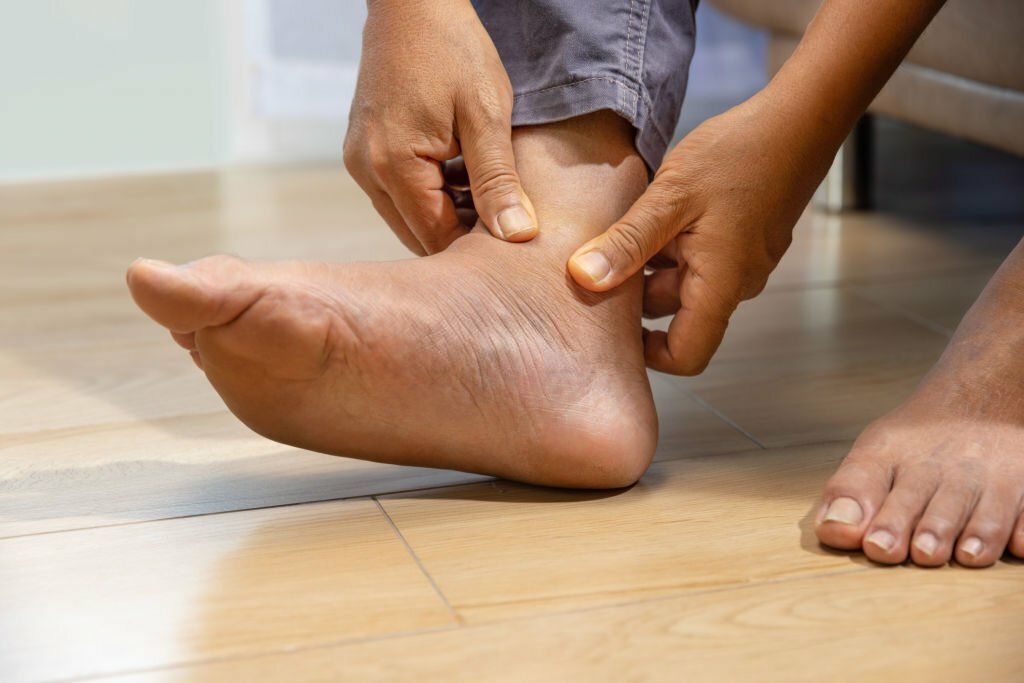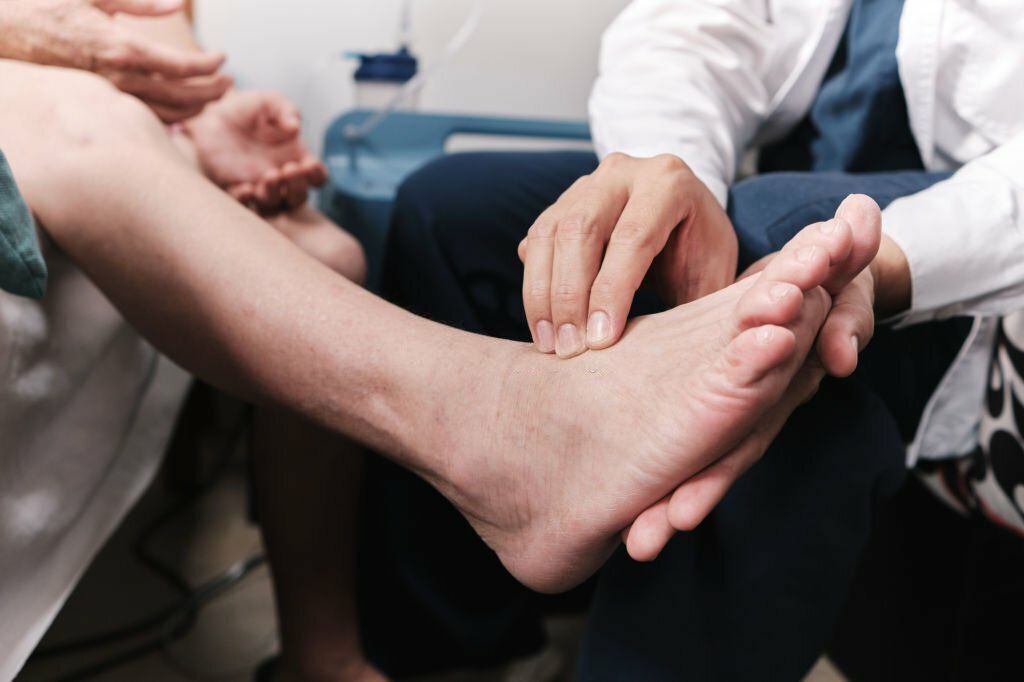This article is reviewed, corrected, and approved by: Dr. Joshua Collins M.D. | MRCP। FRCP
The foot is an essential part of the human body. As one of the most vital parts of the human body, feet are susceptible to various issues that can cause discomfort, pain, and even disability. Flat feet surgery is a procedure that aims to correct this condition by reconstructing the arches with the use of bone grafts, implants, or sutures.
What Is Flat Feet Surgery?
It is a surgical procedure to correct the structure of the foot and improve its function. It is typically recommended for people who have severe flat feet that cause pain and discomfort, limit mobility, or increase the risk of developing other foot problems.
Types of Flat Feet Surgery
There are two main types of flat feet surgery:
- Fusion surgery: This procedure involves fusing two or more bones in the foot to create a more secure and stable arch.
- Soft tissue surgery: During this procedure, damaged tendons and ligaments are repaired or replaced in order to improve the foot's stability.
Flat Feet Surgery Pros and Cons
We are about to discuss some advantages and disadvantages of flat feet surgery.
Pros of Flat Feet Surgery
Flat feet surgery can offer a number of benefits, including
Pain relief
Flat feet surgery can relieve ankle pain and discomfort caused by flat feet.
Improved function and mobility
Surgery for flat feet can enhance foot function and mobility. It makes it easier for individuals to walk, run, and engage in various activities.
Reduced risk of complications
Having your flat feet corrected can help lower your risk of new issues or foot problems.
Improved quality of life
People who have flat feet may benefit from flat foot surgery. Participation in daily activities that bring joy and enhance the overall quality of life is of utmost importance to many individuals.
Better solution than therapy
For long-term advantages, surgery is better than flat feet therapies.
Cons of Flat Feet Surgery

Flat feet surgery also has some potential risks and drawbacks, including:
Long and painful recovery period
The recovery period from flat feet surgery can be long and painful. Lasting several weeks or even months. After the procedure, flat feet and ankle pain may be felt.
Risk of complications
Like any surgery, flat feet surgery carries the potential for complications like infection, nerve damage, and incisions that do not heal properly.
High cost of surgery
Flat feet surgery can be expensive and uninsured.
Soreness and Pain
You may encounter flat feet, ankle pain, and soreness after the procedure, particularly if you have flat feet.
Other Considerations

Before you think about having surgery for flat feet, it's crucial to talk to a foot and ankle surgeon about all your treatment choices. There exist several non-invasive options worth considering, including orthotics, physical therapy, and modifications to one's daily routine.
These alternatives may potentially be mentally and physically beneficial and worth exploring before opting for surgery. Surgery should only be considered if these non-surgical treatments haven't been successful in giving you relief.
Collapsed Arch vs Flat Feet
How To Decide Whether or Not Flat Feet Surgery Is Right for You?
The decision of whether or not to have flat feet surgery is personal. It is important to weigh the pros and cons carefully and talk to your surgeon about your expectations and goals. If you are currently in the process of decision-making, the following factors may be worth considering:
- The severity of your symptoms: It actually depends on how much pain and discomfort you feel due to flat feet.
- The risks and benefits of surgery: Talk to your surgeon about your confusion or questions. Also, the risks and benefits of surgery.
- Your expectations and goals: Expectations might be like what you hope to achieve with surgery. Either are your expectations realistic or not, etc.
- Your lifestyle: Before deciding to undergo surgery, consider your lifestyle, the future health benefits, and the risks associated with this.
Conclusion
Flat feet surgery can be a life-changing procedure for some people. Especially those who have severe flat feet that cause pain and discomfort, limit mobility, or increase the risk of developing other foot problems.
Before undergoing any surgery, to make a rational decision, it is necessary to examine flat feet surgery pros and cons in depth. It's better to have a conversation with your foot and ankle surgeon. To explore all available treatment choices. And openly discuss your desired outcomes and objectives.
Frequently Asked Questions (FAQs)
Q: What are the good feet arch support costs?
Ans: Generally, a good arch support costs around $300 to $500 in the US.
Q: What are the differences between supination vs pronation?
Ans: Supination is the outward rolling of the foot, while pronation is the inward rolling of the foot. These motions are most commonly associated with the ankle and are part of the natural gait cycle.
Q: Are Birkenstocks good for flat feet?
Ans: Many users gave positive reviews that birkenstocks might be good for feet. But there is no scientific proof.
Q: What does curvy feet mean?
Ans: Curvy feet have a natural S-shape and are often wider than other foot types.
Summary: Flat Feet Surgery: Pros and Cons
- Fusion Surgery: Involves fusing two or more foot bones to create a stable arch.
- Soft Tissue Surgery: Repairs or replaces damaged tendons and ligaments to enhance foot stability.
- Pain Relief: Alleviates ankle pain and discomfort associated with flat feet.
- Improved Function and Mobility: Enhances foot function, making activities like walking and running easier.
- Reduced Risk of Complications: Lowers the risk of developing new foot problems.
- Improved Quality of Life: Enables participation in daily activities, enhancing overall well-being.
- Long-term Solution: Offers more lasting benefits compared to therapies.
- Long Recovery: Involves a potentially lengthy and painful recovery period, lasting weeks to months.
- Risk of Complications: Like any surgery, carries potential risks such as infection, nerve damage, and poor incision healing.
- High Cost: Can be expensive, especially for those without insurance.
- Post-surgery Discomfort: May experience soreness, ankle pain, and flat feet discomfort after the procedure.
Types of Flat Feet Surgery
Pros of Flat Feet Surgery
Cons of Flat Feet Surgery
Other Considerations
Before opting for flat feet surgery, explore non-invasive options like orthotics, physical therapy, and lifestyle modifications. These alternatives can be mentally and physically beneficial and should be considered before surgery.


